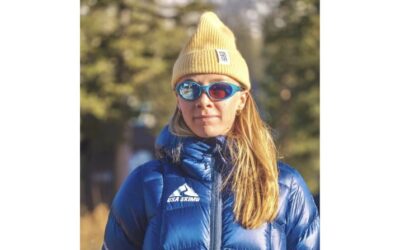The snow and ice are melting from the jagged peaks of the Tetons. That means more people are climbing the area’s most technical routes. And each summer, some of those hikers and climbers are surprised by the level of skill needed to safely ascend and descend the mountains. Places where icy, firm snow persists at high elevations and losing your footing can have grave consequences.
In other words, rescue season is now underway.
Rangers in Grand Teton National Park responded to two incidents last week that required dozens of personnel and considerable resources. The first was on the Southwest Couloir off the Middle Teton.
On July 17, 17-year-old Natalie Ulloa of Texas, climbed the Middle Teton and descended via the Southwest Couloir. That’s when she took a 100-foot fall. She slipped on ice and snow and landed on rock below her. Ulloa injured her leg and was unable to move, said Denise Germann, public affairs officer for Grand Teton National Park.
“It was definitely an involved incident,” Germann said.
Ulloa had fallen in an area that wasn’t easy to access by helicopter. Complicating things further, the winds were ripping through the valley. “So the idea of getting a helicopter in to help extricate her from the backcountry wasn’t feasible,” Germann said.
Still, Ulloa was in good hands. Since Jenny Lake Climbing Rangers couldn’t perform a rescue on Wednesday, two of them spent the night with her in the backcountry. Meanwhile, two additional rangers hiked out with other members of the party. “And that was quite a challenging task as well because they were going over rock, ice and snow and it was in the dark,” Germann said.
That descent also took notably longer than usual because it was above the party’s skill level, Germann said.
The next day the winds hadn’t let up. So rangers enlisted the help of the trail crew. In case the helicopter couldn’t land, trail crew was ready to hike several miles into Garnet Canyon with a wheeled stretcher. Ultimately, rangers got their window to fly a helicopter in and lift the injured hiker from the mountain. They transported her down to Lupine Meadows to an ambulance that took her to the hospital.
Some members of Ulloa’s party were experienced and some were equipped with ice axes and crampons, but not everyone, Germann said. She couldn’t say whether Ulloa herself had the proper equipment.
‘Not Just a Simple Walk-Up’
Jenny Lake Climbing Ranger Rich Baerwald noted the party’s objective, the Middle Teton, is a common goal for visitors and residents “being one of the highest peaks” in the area. But, he said, he wants to get the message out “that it’s not just a simple walk-up.”
During a climber’s approach of the Middle Teton, “there’s numerous snow crossings in the south fork of Garnet Canyon at this time of year,” Baerwald said. “That shady north-facing canyon requires the use of an ice axe on some of its steep approach slopes. Crampons might even be needed some mornings. And then once you’re turning the corner and actually into the Southwest Couloir, half of it is steep, firm snow.”
Steep, firm snow that will most definitely require an ice axe and the knowledge to use it, Baerwald said.
The excitement for Jenny Lake Climbing Rangers wasn’t over yet that day. Just on the heels of Natalie Ulloa’s rescue, which began Wednesday afternoon and ended Thursday evening, another call came in. Baerwald described the location of that second incident as a “seldom traveled area.”
Two climbers were in Death Canyon, near the Son of Apocalypse Couloir. Germann said one climbers triggered major rock fall “and one of them was a very large rock that hit one of the individuals and injured him.”
A ranger arrived on the scene to assess the man’s injuries. They were severe, and 22-year-old Daniel Henderson of Michigan was transported via helicopter to St. John’s Medical Center.
Baerwald said the party would have benefited from contacting the Jenny Lake Climbing Rangers beforehand. Then, he said, rangers would have warned the party about dangers in that area like rock fall.
Meanwhile, the takeaway from Natalie Ulloa’s rescue off the Southwest Couloir? “Right now we still have a lot of snow up high,” Germann said. “So people are crossing snow and it’s hard snow so it’s hard to get a footing in it. You really need to have an ice axe and crampons to be able to transport over some of that snow.”
Germann said people considering high elevation routes who don’t have experience navigating snow and ice with crampons and ice axes should do one thing: Consider a different route.






